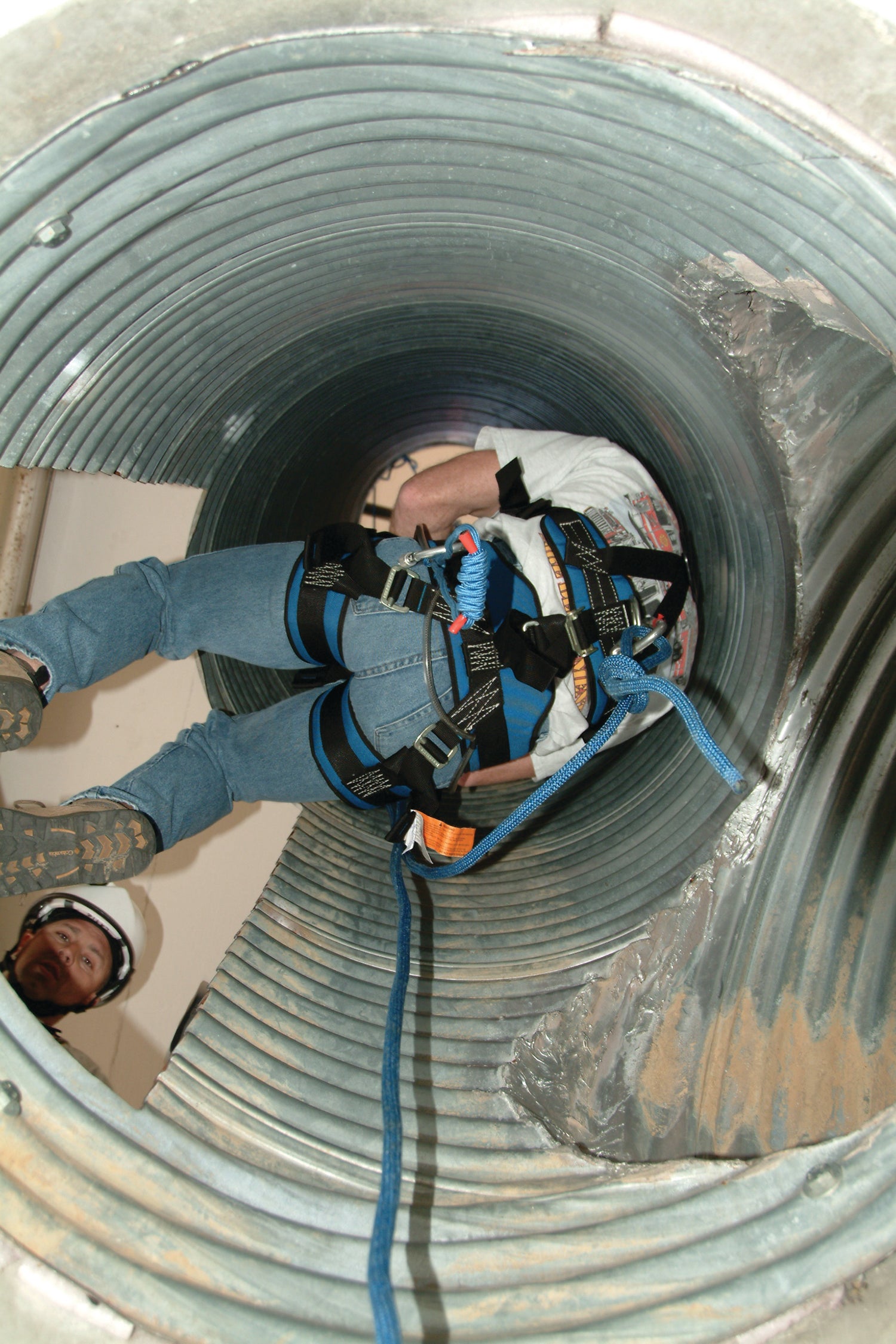Ready for disasters: Fire dept. upgrades certifications
Published 9:28 am Monday, January 10, 2022

- Mocksville firefighters train on rescuing someone from an agricultural or other tuype of silo.
|
Getting your Trinity Audio player ready...
|
By Nic Quance
Word Master Media Group
When disaster strikes, many don’t think twice about the availability and capability of first responders.
However, the people behind the scenes are constantly making sure these emergency services are ready for anything. It’s no small feat to accomplish: rigorous training and equipment go into a first responder service, particularly a renowned fire department.
Frank Carter, chief of the Mocksville Fire Department, shared about the certifications and preparation that went into achieving this goal, including the department’s new certifications; heavy rescue and machinery and agricultural.
The heavy rescue certification signifies that the department has the tools, equipment, and trained personnel to mitigate incidents involving things like bus accidents, heavy machinery incidents, and tractor-trailer accidents, to name a few.
The machinery and agricultural certification indicates that the fire department’s personnel are prepared for the most common injuries and accidents that occur with farm equipment, including patient stabilization and extrication.
“We set a goal to become heavy rescue certified and it has been an ongoing process for probably the last five or six years,” Carter said. “We budgeted over that time to obtain the heavy rescue equipment and have invested over $50,000.
“Along the way, we obtained multiple other certifications as well, beginning with confined space certification to support the town’s public works department. They were going into sewer maintenance holes and other areas below ground performing maintenance and other work. At the time, there was really nobody providing a rescue service for those folks in the event of an accident. That might have been 10 years ago,” said Carter, who has been with the MFD since 1988, was promoted to a chief officer position in 2003, and serves as the chief.
Achieving this has been no minor matter, the training time that is involved is immense. The basic technical rescue certification for each member is 120 hours, then the specialty areas such as confined space, machinery and agricultural, and rope certification represent over 400 hours of additional training.
With COVID-19 supply chain issues, along with intense training required, this process has taken a lot of time and patience, Carter said.
Although it has been a long process, Lt. C.J. Dwiggins, who has overseen each step, says it has been rewarding. “We hope we can enhance our level of service for the citizens.”
Heavy rescue certification completes the arsenal of certifications that ensure the department can handle anything that is thrown at it. The department is certified for confined space, high angle, medium rescue, heavy rescue, medical response, and machinery and agricultural rescue.
“It’s nice to have the certification but it’s more of a validation of the department and its members’ commitment to serving the needs of the community,” Carter said. “The NC Rescue Association has set the standards, and we have met those standards. It makes sure you’re not practicing outside of your scope. We do this for redundancy within the county.
“The Davie County Rescue Squad is the primary rescue organization for the county, but if they are committed to an incident in another part of the county, I, as the fire chief, want to make sure my district and others are protected and we can fully support the rescue squads efforts and provide mutual aid to them … if we have the equipment and personnel to manage an incident here, we may as well do that.”
Mocksville Town Manager Ken Gamble appreciates the MFD’s efforts. “The town is proud of Chief Carter and his leadership in developing the heavy rescue program for the fire department. The program will increase an already impressive array of services provided by the dedicated firefighters serving the Town of Mocksville.”
The department has many skills and resources the public may not think has anything to do with a local fire department.
“We respond to medical issues, as everyone is an EMT here, so we provide first response medical assistance. We respond to traffic accidents, grass fires, car fires, structure fires, and hazmat; we run a technician level hazmat team that provides that service to the entire county,” said Carter.
He said it’s important to remember the roots of the department to observe the progress made for the community.
“Predominantly, years ago, it was a full volunteer service. It operated under the town as the fire department, and to the best of my knowledge, it was founded in 1877,” Carter said. “We are transitioning to volunteerism going away and into becoming paid service. We have many part-time staff now. We try to man the station 24/7, but there are some shortages we’re dealing with, so we don’t have full coverage, but our volunteers still come when they can. Today, for example, we’ve already had five calls. This is just one of those days it was busy.”
Volunteers are still a critical component of the operation, and Carter wants to make sure the call for volunteers does not go unheard.
“We need volunteers. Unfortunately, volunteerism is a dying thing these days. People’s lives are too busy, and the demand for service has gone up so much. The training and certification required are hard on a volunteer to manage with families and other commitments.
“When I first started, there was a lot of industry here that would let people leave work to respond to a call, but that’s not the case anymore. Times have just changed.
“Once you acquire certifications, you are on a resource list, state-wide if you’re ever needed.”
Surrounding areas can call upon local emergency workers in the event their skills are needed for adequate assessment of the emergency.



